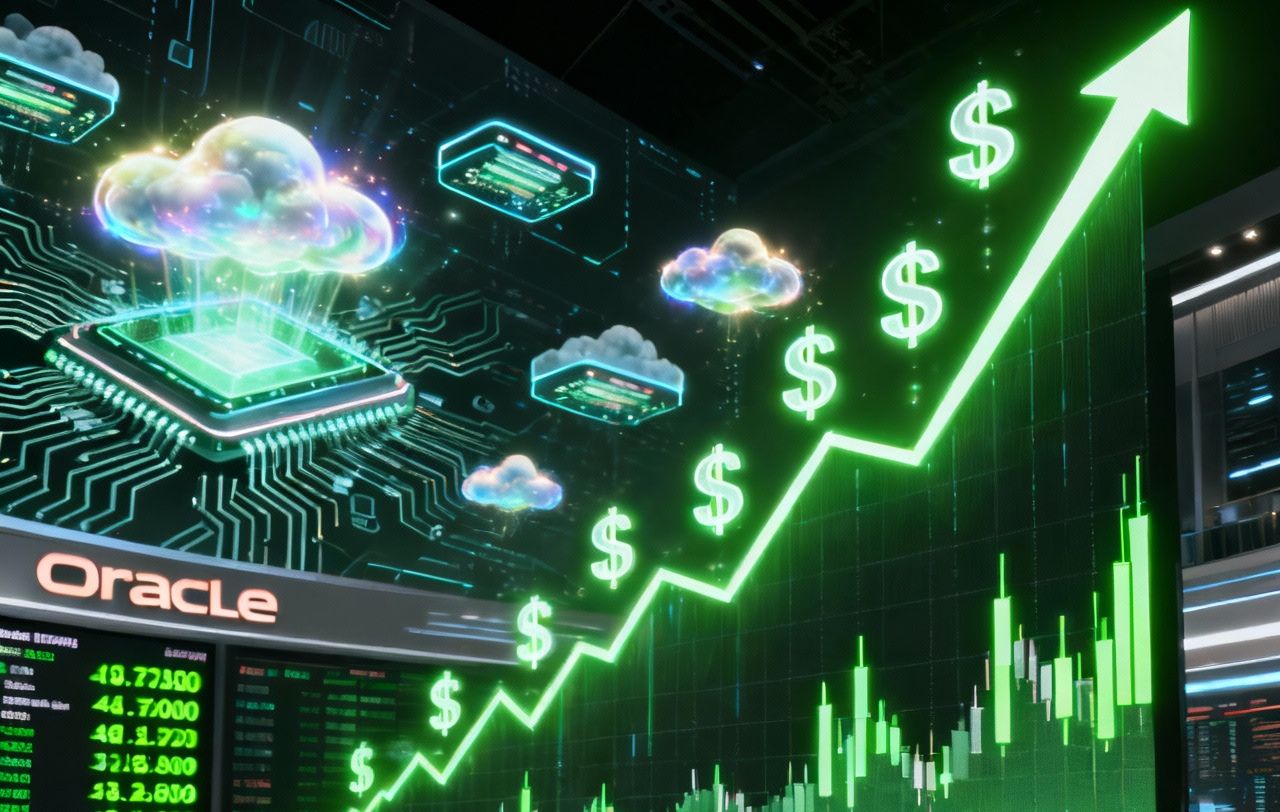Inflation Cooldown Meets AI Mania

Wall Street woke up in a good mood this morning. Wholesale inflation data came in well below expectations, bolstering bets that the Federal Reserve has the green light to cut rates in its September meeting.
The Producer Price Index (PPI) actually ticked down 0.1% in August against forecasts of a 0.3% rise, lifting hopes that consumer prices will show similar cooling when the CPI drops tomorrow. Treasury yields briefly dipped under 4.07% as traders priced in near-certainty of a rate cut, with nearly 10% now betting on a jumbo half-point move.
This alone might have sparked a rally, but Oracle poured rocket fuel on the day. Shares of Oracle (ORCL) soared over 40%, pushing the company’s market capitalization toward $1 trillion and shaking up the leaderboard of America’s most valuable corporations. The S&P 500 and Nasdaq both climbed roughly 0.5% to fresh record highs, while the Dow slipped modestly, weighed down by Apple’s post-iPhone-launch retreat and other non-tech laggards.
The Oracle Effect: From Legacy Software Giant to AI Cloud Juggernaut
Oracle stunned analysts with a forecast that feels less like traditional enterprise IT and more like a declaration from the AI vanguard. CEO Safra Catz projected cloud infrastructure revenue would swell to $144 billion by 2030, up from $18 billion this year. The company detailed a massive expansion in bookings from what it called the “who’s who of AI,” pointing to deals with OpenAI, Meta, Elon Musk’s xAI, and other power players.
One number that got traders buzzing: Oracle revealed an astonishing $455 billion in backlog orders tied to AI buildout. This puts the company into rarefied air, alongside cloud hyperscalers like Microsoft and Amazon, after years of being dismissed as a legacy database provider.
The upside ricocheted across markets. Nvidia gained nearly 4%, AMD 3.5%, and Broadcom surged 9% as investors realized Oracle’s capital spending boom means more purchases of GPUs and networking gear.
The Fed, Trump, and the Politics of Rates
All of this plays out against a messy political backdrop. President Trump has been pushing aggressively for rate cuts, even attempting (unsuccessfully, thanks to a court block) to fire Fed governor Lisa Cook. The Fed meets next week, and the cooler inflation report today plus weakening labor data have cemented expectations of a September cut.
Trump has also escalated trade brinksmanship, calling for 100% tariffs on both China and India, using them as leverage against Russia in Ukraine negotiations. For now, however, the markets are fixated more on Jerome Powell’s Fed than on geopolitics.
Why This Matters
Markets can get drunk on AI narratives, but Oracle’s surge is proof that revenue pipelines are materializing. For the Fed, this creates a paradox: inflation is cooling, opening the door to cuts, even as the AI boom leads to massive capex and potentially another wave of demand-driven growth.
Investors eager to ride the Oracle rally may need to ask if today’s optimism is sustainable or just another chapter in the increasingly volatile AI trade. After all, JPMorgan’s top equity strategist is already warning of an 8% near-term pullback if CPI surprises hotter than expected tomorrow (CNBC).
Right now, though, the market is treating Oracle as not just another software giant, but as perhaps the single most important validation of the AI infrastructure supercycle.
